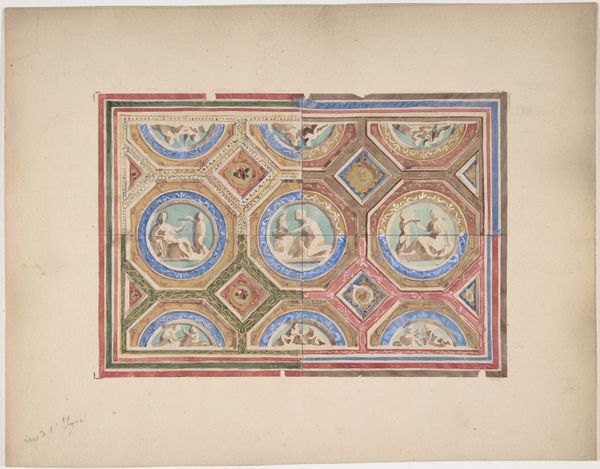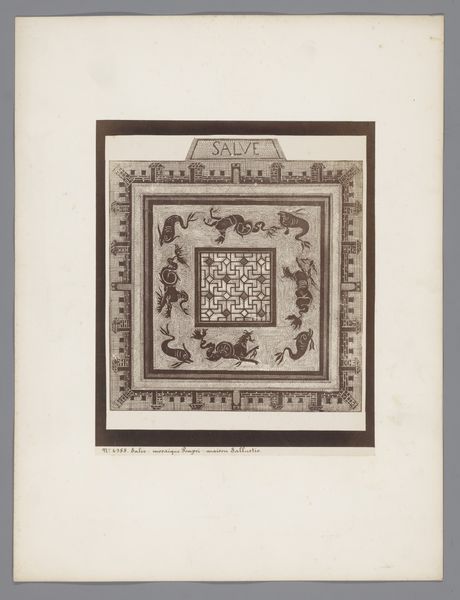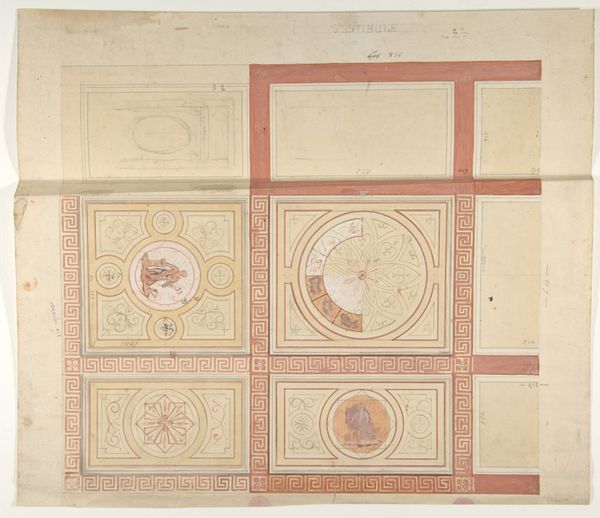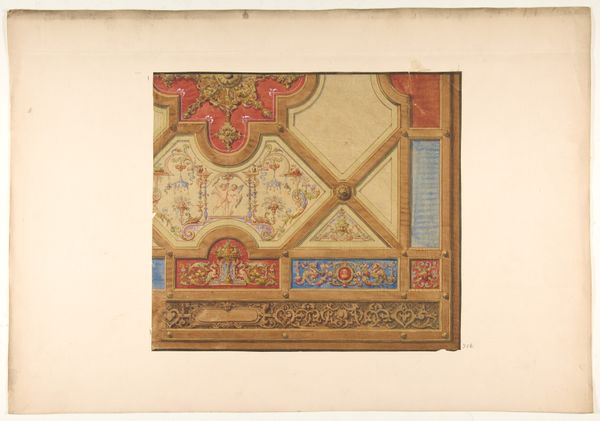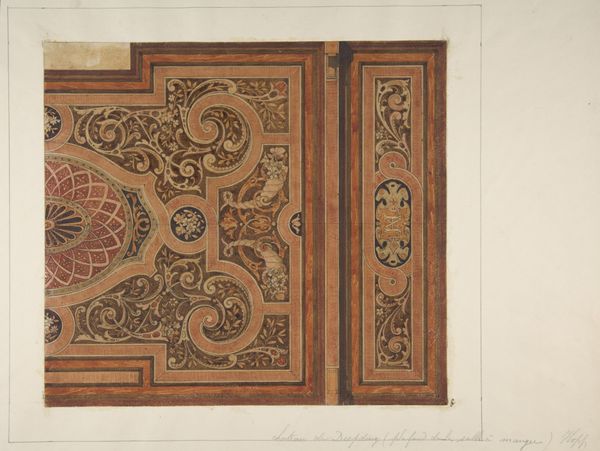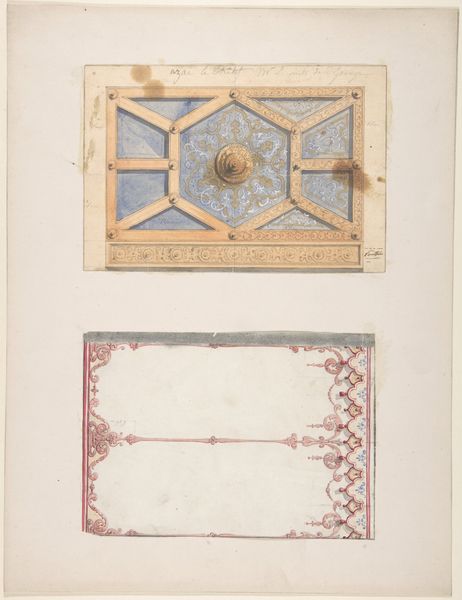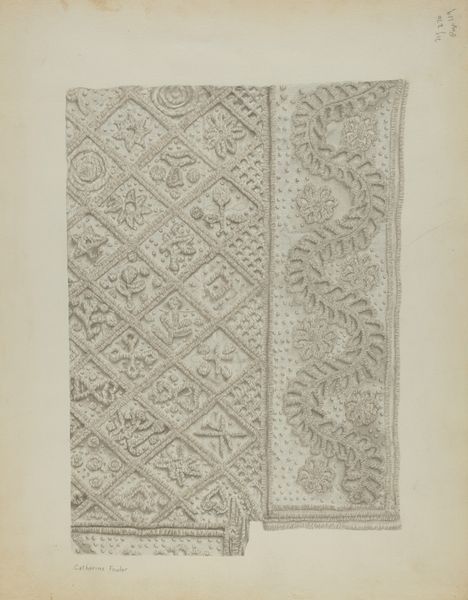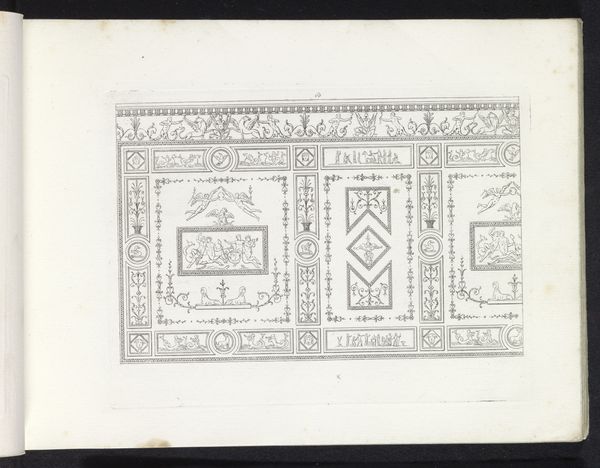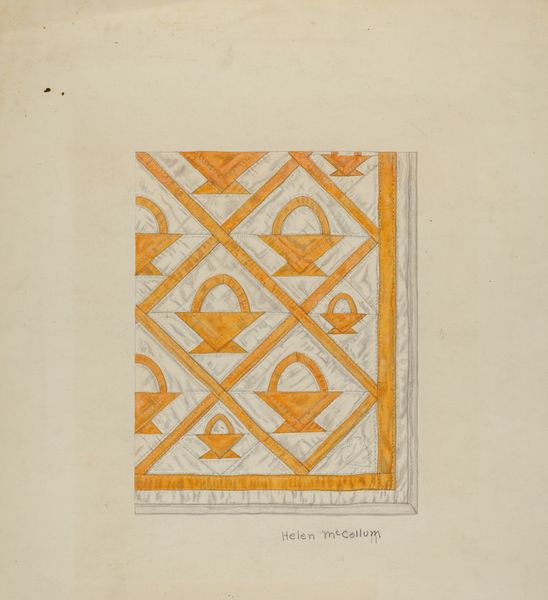
drawing, coloured-pencil, print
#
drawing
#
coloured-pencil
# print
#
coloured pencil
#
geometric
#
decorative-art
Dimensions: 10 9/16 x 10 9/16 in. (26.8 x 26.8 cm)
Copyright: Public Domain
Curator: We’re looking at “Design for a Carpet” here at the Metropolitan Museum of Art, an intriguing drawing made with coloured pencils in the 19th century. Editor: My first impression is one of contained opulence. The colour palette, with its deep reds and touches of gold, speaks to luxury, but the rigid geometry imposes a definite sense of order. Curator: Indeed. Those rigid geometric forms—squares within squares, Greek key patterns—immediately invoke classical ideals, a visual language understood by elites across Europe during that period. The rosettes are timeless symbols, aren’t they? Perhaps alluding to cycles of life or celestial order? Editor: I'm struck by the labour involved in rendering each small component; just imagine how many hands would be involved in the production of the actual carpet, based on this design. We’re looking at a highly specialized craft tradition, probably within a factory setting. Curator: Absolutely. But the decorative vocabulary goes deeper, doesn't it? Those floral scrolls aren't mere decoration. Consider the acanthus leaf motif - symbolic of immortality and regeneration. These classical references were signals; this carpet was designed to imbue a space with a particular cultural and social resonance. Editor: It also raises interesting questions about consumption, doesn't it? The intended client for such a design would undoubtedly be part of the nouveau riche; carpet making was not typically within easy financial reach of the everyday person at this time. Curator: Yes, objects like these acted as markers of identity, a visual shorthand communicating wealth, taste, and aspirations. To place such a carpet was about situating oneself within a particular lineage, wasn't it? Editor: It’s an excellent case study of how a material object like a carpet design can reflect broader socio-economic structures and the power dynamics of 19th-century society. Curator: Exactly, and how enduring visual motifs can subtly reinforce these structures over time. It also calls to mind our own impulse for embedding our personal meanings in our material possessions, right? Editor: Fascinating how such a restrained design contains such potential energy for exploring cultural narratives, and social structures embedded within the production and use of material objects.
Comments
No comments
Be the first to comment and join the conversation on the ultimate creative platform.

